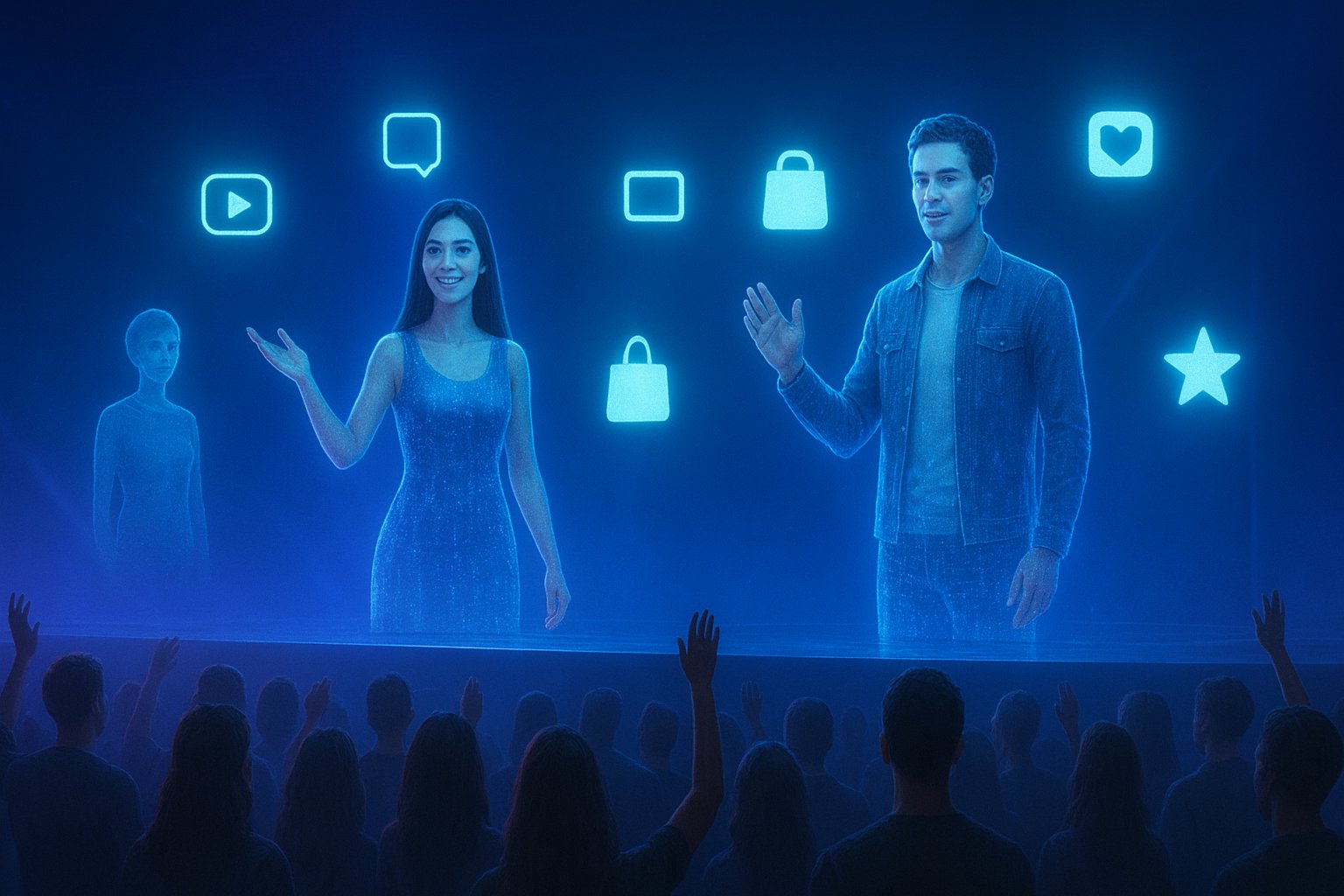
August 17, 2025
Generative Influencers: Are AI Personalities the Future of Brand Trust?
The influencer industry has always thrived on relatability, charisma, and the ability to inspire consumer behavior. But in 2025, a new breed of personalities is taking center stage. These are not human at all. They are AI-generated influencers, trained on billions of data points and designed to maximize engagement, relatability, and brand loyalty. The rise of generative influencers raises a critical question: can trust truly exist when the person on screen is not a person at all?
The Birth of Synthetic Celebrities
AI-driven personalities are not entirely new. Early experiments in virtual idols, digital brand mascots, and virtual YouTubers laid the groundwork. But the latest generation of synthetic influencers goes beyond pre-scripted characters. Powered by generative models, they evolve, respond, and adapt in real time. Their facial expressions shift with audience sentiment. Their tone changes to match cultural trends. They can be endlessly replicated, customized, and optimized.
For brands, this seems like the perfect partnership. No scandals, no scheduling conflicts, no unpredictable human flaws. But for audiences, the effect is more complicated. Trust is no longer tied to authenticity in the human sense. It is tied to how convincingly AI can simulate emotional connection.
Why Brands Are Betting on Generative Influencers
The incentives are clear:
- Cost efficiency: One AI model can create endless campaigns without the high fees of celebrity endorsements.
- Consistency: AI never needs rest and never risks saying something out of line.
- Customization: Synthetic influencers can shift styles to match target demographics, even running parallel campaigns in different cultures at the same time.
- Scalability: An AI personality can instantly appear across every platform, from social media to live streams to interactive ads.
From a business perspective, the efficiency is irresistible. But from a cultural perspective, it pushes the boundary of what we define as genuine connection.
The Illusion of Relatability
The greatest strength of AI influencers is also their greatest weakness. They are engineered to feel relatable. Their smiles, gestures, and voices are designed to mirror human warmth. Yet every action is an algorithmic output. This creates a paradox. Consumers know they are not engaging with a human, but the brain still reacts emotionally to simulated empathy.
This raises key questions:
- If trust can be engineered, does it still carry meaning?
- Does synthetic relatability undermine human influencers who built followings on authenticity?
- At what point does persuasion become manipulation when algorithms are optimized for influence?
Risks of Generative Influencers
The rise of AI-generated personalities comes with risks that extend beyond branding:
- Erosion of authenticity: The more audiences engage with synthetic personalities, the harder it becomes to distinguish between genuine connection and engineered simulation.
- Deepfake normalization: If consumers accept AI influencers, it may desensitize society to synthetic media in harmful contexts.
- Ethical gray zones: Who owns the voice, face, or mannerisms of an AI influencer if they resemble real people?
- Manipulation at scale: Unlike humans, AI influencers can run millions of micro-interactions simultaneously, shaping consumer behavior without transparency.
Psychological Impact on Audiences
Engaging with synthetic influencers is not just a transactional experience. For some users, the relationship feels personal. Generative influencers can learn individual user preferences, respond in real time, and create the illusion of friendship. This is powerful but potentially harmful. If consumers invest emotionally in AI figures that exist only to sell products, the line between relationship and marketing disappears entirely.
Regulation and Responsibility
As synthetic influencers spread, regulators and industry leaders face urgent decisions:
- Should AI personalities disclose their artificial nature at all times?
- How should platforms label interactions with generative figures?
- Do consumers have the right to opt out of synthetic influence in advertising feeds?
- Should there be ethical limits on how closely AI personalities can resemble real humans?
These questions will determine whether generative influencers become a legitimate part of advertising or a flashpoint of backlash.
The Future of Brand Trust
Trust has always been the currency of influence. With generative influencers, that trust is tested. Some audiences may embrace the novelty, treating AI figures as entertaining extensions of brand identity. Others may recoil, seeing them as manipulative simulations.
For brands, the challenge will be balance. Transparency, accountability, and clear boundaries may help audiences feel comfortable. Brands that use AI influencers without disclosure risk damaging long-term trust, even if the short-term engagement numbers look strong.
Conclusion: Synthetic Trust in a Synthetic Age
Generative influencers represent the cutting edge of digital persuasion. They offer brands efficiency, consistency, and unprecedented reach. But they also raise deep questions about authenticity, manipulation, and the value of human connection.
The future of brand trust may not depend on whether audiences accept AI personalities, but on how openly and responsibly brands use them. In a digital world where influence can be simulated, transparency becomes the only real anchor of trust.